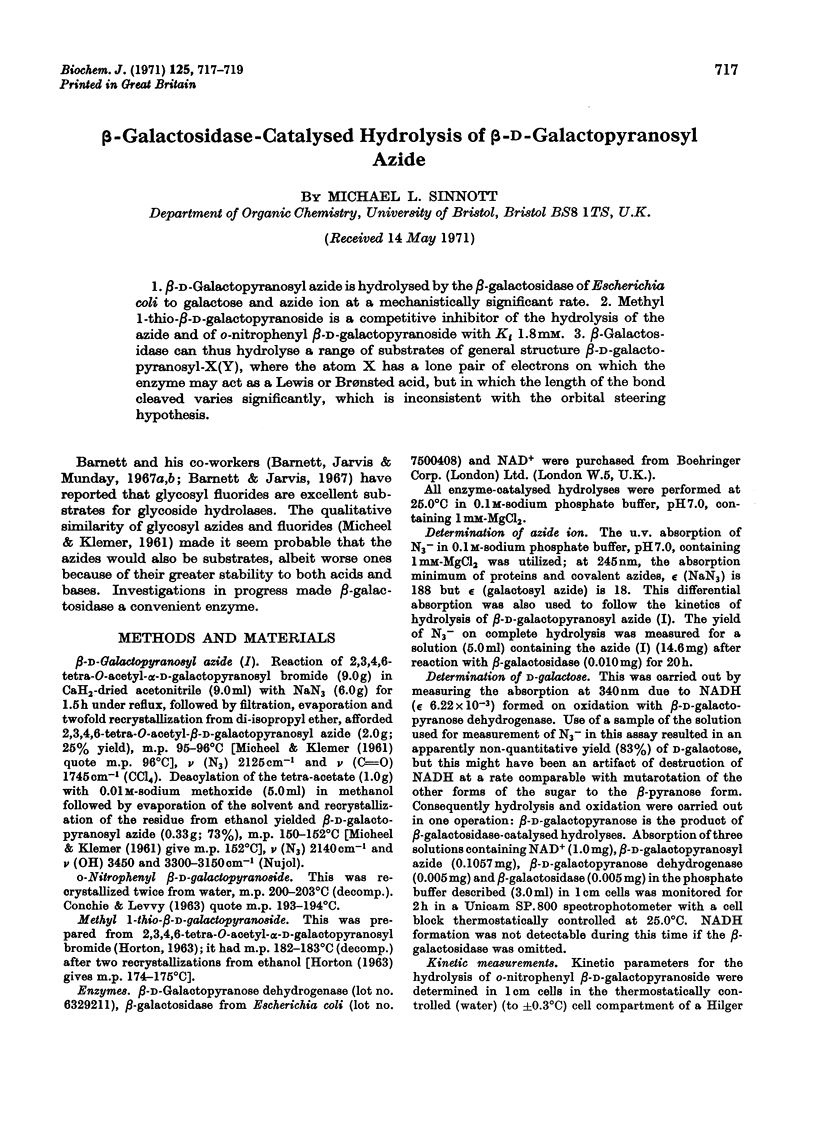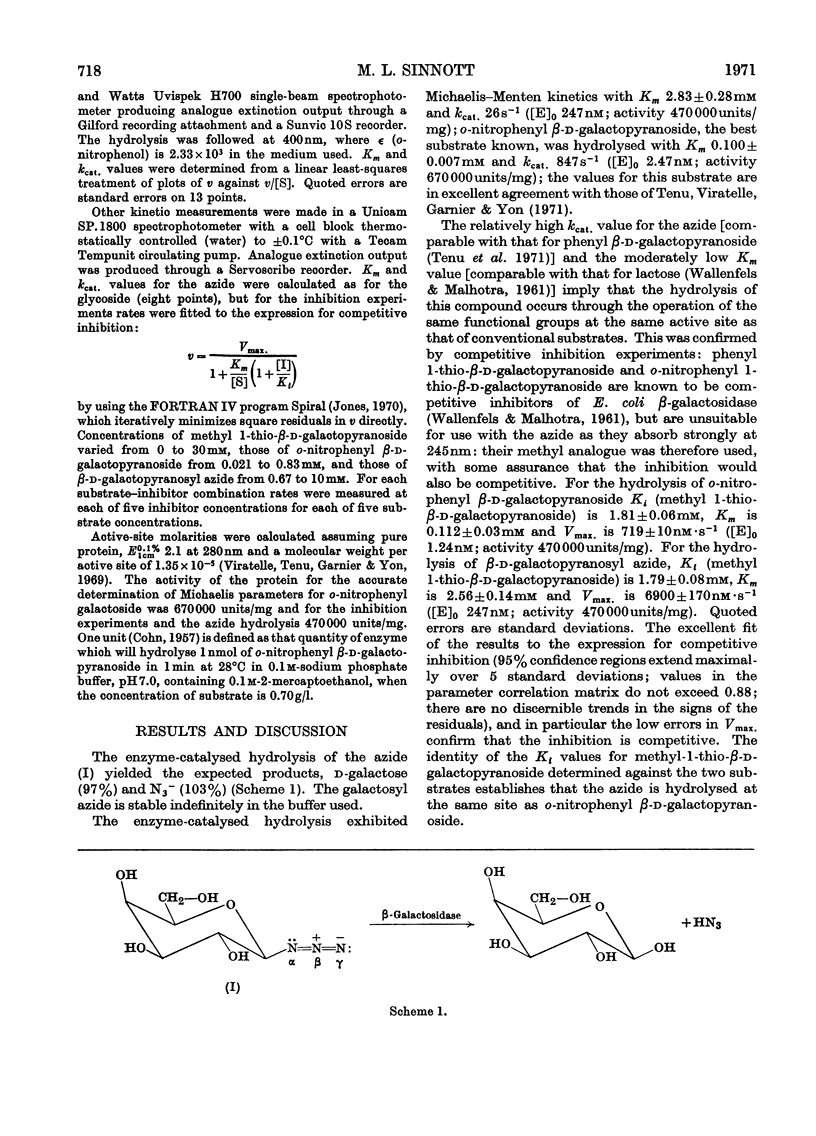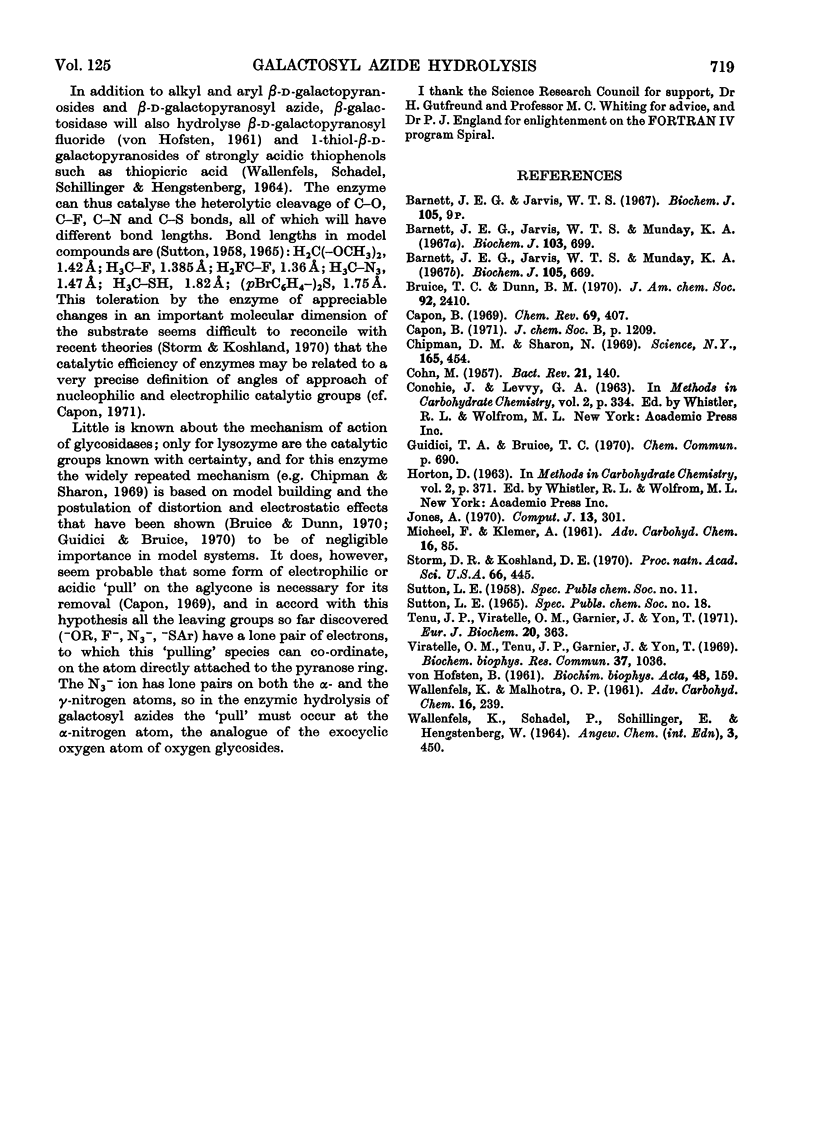Abstract
1. β-d-Galactopyranosyl azide is hydrolysed by the β-galactosidase of Escherichia coli to galactose and azide ion at a mechanistically significant rate. 2. Methyl 1-thio-β-d-galactopyranoside is a competitive inhibitor of the hydrolysis of the azide and of o-nitrophenyl β-d-galactopyranoside with Ki 1.8mm. 3. β-Galactosidase can thus hydrolyse a range of substrates of general structure β-d-galactopyranosyl-X(Y), where the atom X has a lone pair of electrons on which the enzyme may act as a Lewis or Brønsted acid, but in which the length of the bond cleaved varies significantly, which is inconsistent with the orbital steering hypothesis.
Full text
PDF


Selected References
These references are in PubMed. This may not be the complete list of references from this article.
- Barnett J. E., Jarvis W. T., Munday K. A. Enzymic hydrolysis of the carbon-fluorine bond of alpha-D-glucosyl fluoride by rat intestinal mucosa. Localization of intestinal maltase. Biochem J. 1967 Jun;103(3):699–704. doi: 10.1042/bj1030699. [DOI] [PMC free article] [PubMed] [Google Scholar]
- Barnett J. E., Jarvis W. T., Munday K. A. The hydrolysis of glycosyl fluorides by glycosidases. Biochem J. 1967 Nov;105(2):669–672. doi: 10.1042/bj1050669. [DOI] [PMC free article] [PubMed] [Google Scholar]
- COHN M. Contributions of studies on the beta-galactosidase of Escherichia coli to our understanding of enzyme synthesis. Bacteriol Rev. 1957 Sep;21(3):140–168. doi: 10.1128/br.21.3.140-168.1957. [DOI] [PMC free article] [PubMed] [Google Scholar]
- Chipman D. M., Sharon N. Mechanism of lysozyme action. Science. 1969 Aug 1;165(3892):454–465. doi: 10.1126/science.165.3892.454. [DOI] [PubMed] [Google Scholar]
- MICHEEL F., KLEMER A. Glycosyl fluorides and azides. Adv Carbohydr Chem. 1961;16:85–103. doi: 10.1016/s0096-5332(08)60260-x. [DOI] [PubMed] [Google Scholar]
- Storm D. R., Koshland D. E. A source for the special catalytic power of enzymes: orbital steering. Proc Natl Acad Sci U S A. 1970 Jun;66(2):445–452. doi: 10.1073/pnas.66.2.445. [DOI] [PMC free article] [PubMed] [Google Scholar]
- Tenu J. P., Viratelle O. M., Garnier J., Yon J. pH dependence of the activity of beta-galactosidase from Escherichia coli. Eur J Biochem. 1971 Jun 11;20(3):363–370. doi: 10.1111/j.1432-1033.1971.tb01402.x. [DOI] [PubMed] [Google Scholar]
- Viratelle O., Tenu J. P., Garnier J., Yon J. A preliminary study of the nucleophilic competition in beta-galactosidase catalyzed reactions. Biochem Biophys Res Commun. 1969 Dec 4;37(6):1036–1041. doi: 10.1016/0006-291x(69)90236-8. [DOI] [PubMed] [Google Scholar]
- WALLENFELS K., MALHOTRA O. P. Galactosidases. Adv Carbohydr Chem. 1961;16:239–298. doi: 10.1016/s0096-5332(08)60264-7. [DOI] [PubMed] [Google Scholar]
- von HOFSTEN Fluoro-D-galactosides as substrates and inducers of the beta-galactosidase of Escherichia coli. Biochim Biophys Acta. 1961 Mar 18;48:159–163. doi: 10.1016/0006-3002(61)90527-3. [DOI] [PubMed] [Google Scholar]


